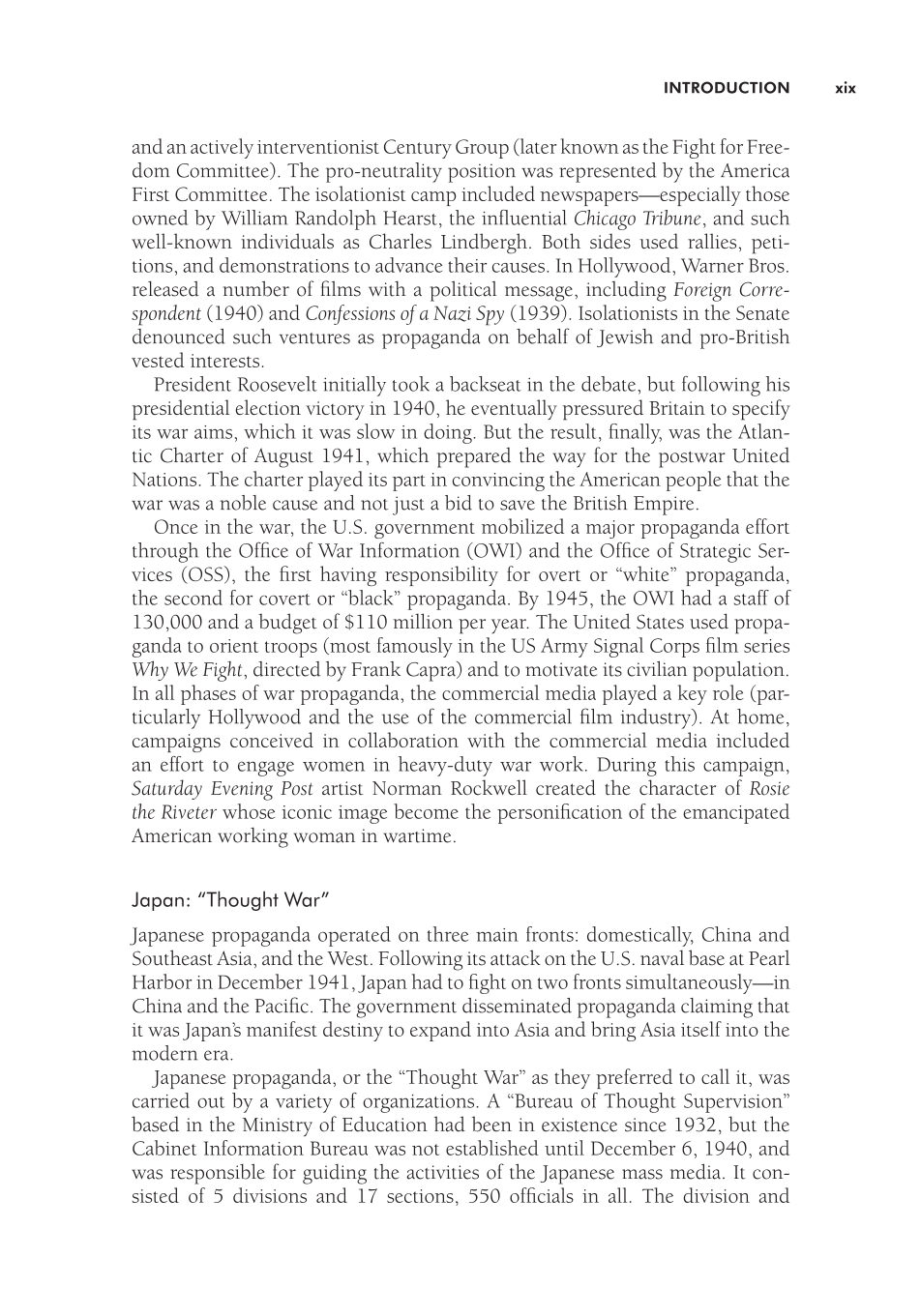Introduction xix
and an actively interventionist Century Group (later known as the Fight for Free-
dom Committee). The pro-neutrality position was represented by the America
First Committee. The isolationist camp included newspapers—especially those
owned by William Randolph Hearst, the influential Chicago Tribune, and such
well-known individuals as Charles Lindbergh. Both sides used rallies, peti-
tions, and demonstrations to advance their causes. In Hollywood, Warner Bros.
released a number of films with a political message, including Foreign Corre-
spondent (1940) and Confessions of a Nazi Spy (1939). Isolationists in the Senate
denounced such ventures as propaganda on behalf of Jewish and pro-British
vested interests.
President Roosevelt initially took a backseat in the debate, but following his
presidential election victory in 1940, he eventually pressured Britain to specify
its war aims, which it was slow in doing. But the result, finally, was the Atlan-
tic Charter of August 1941, which prepared the way for the postwar United
Nations. The charter played its part in convincing the American people that the
war was a noble cause and not just a bid to save the British Empire.
Once in the war, the U.S. government mobilized a major propaganda effort
through the Office of War Information (OWI) and the Office of Strategic Ser-
vices (OSS), the first having responsibility for overt or “white” propaganda,
the second for covert or “black” propaganda. By 1945, the OWI had a staff of
130,000 and a budget of $110 million per year. The United States used propa-
ganda to orient troops (most famously in the US Army Signal Corps film series
Why We Fight, directed by Frank Capra) and to motivate its civilian population.
In all phases of war propaganda, the commercial media played a key role (par-
ticularly Hollywood and the use of the commercial film industry). At home,
campaigns conceived in collaboration with the commercial media included
an effort to engage women in heavy-duty war work. During this campaign,
Saturday Evening Post artist Norman Rockwell created the character of Rosie
the Riveter whose iconic image become the personification of the emancipated
American working woman in wartime.
Japan: “Thought War”
Japanese propaganda operated on three main fronts: domestically, China and
Southeast Asia, and the West. Following its attack on the U.S. naval base at Pearl
Harbor in December 1941, Japan had to fight on two fronts simultaneously—in
China and the Pacific. The government disseminated propaganda claiming that
it was Japan’s manifest destiny to expand into Asia and bring Asia itself into the
modern era.
Japanese propaganda, or the “Thought War” as they preferred to call it, was
carried out by a variety of organizations. A “Bureau of Thought Supervision”
based in the Ministry of Education had been in existence since 1932, but the
Cabinet Information Bureau was not established until December 6, 1940, and
was responsible for guiding the activities of the Japanese mass media. It con-
sisted of 5 divisions and 17 sections, 550 officials in all. The division and






























































































































































































































